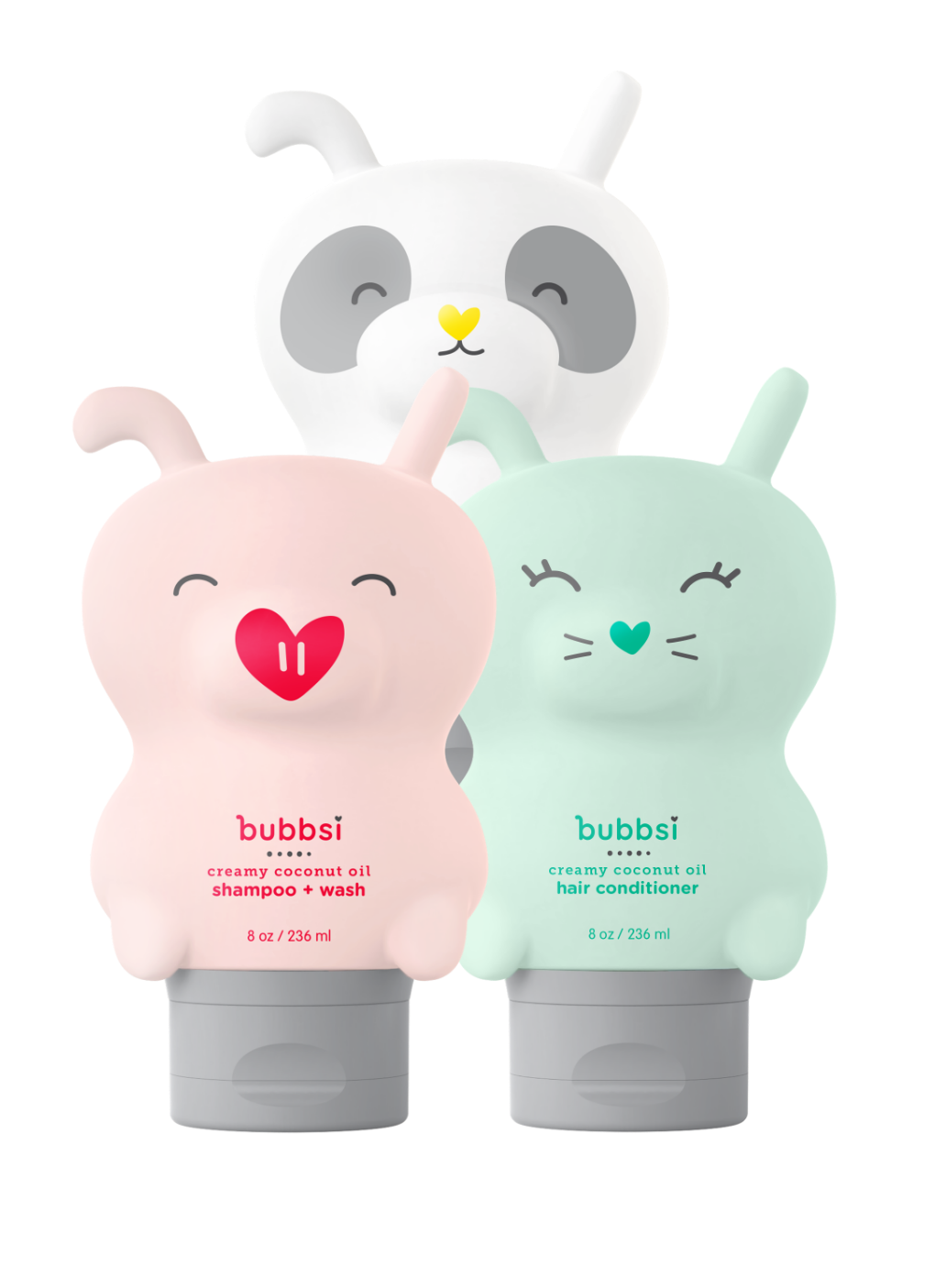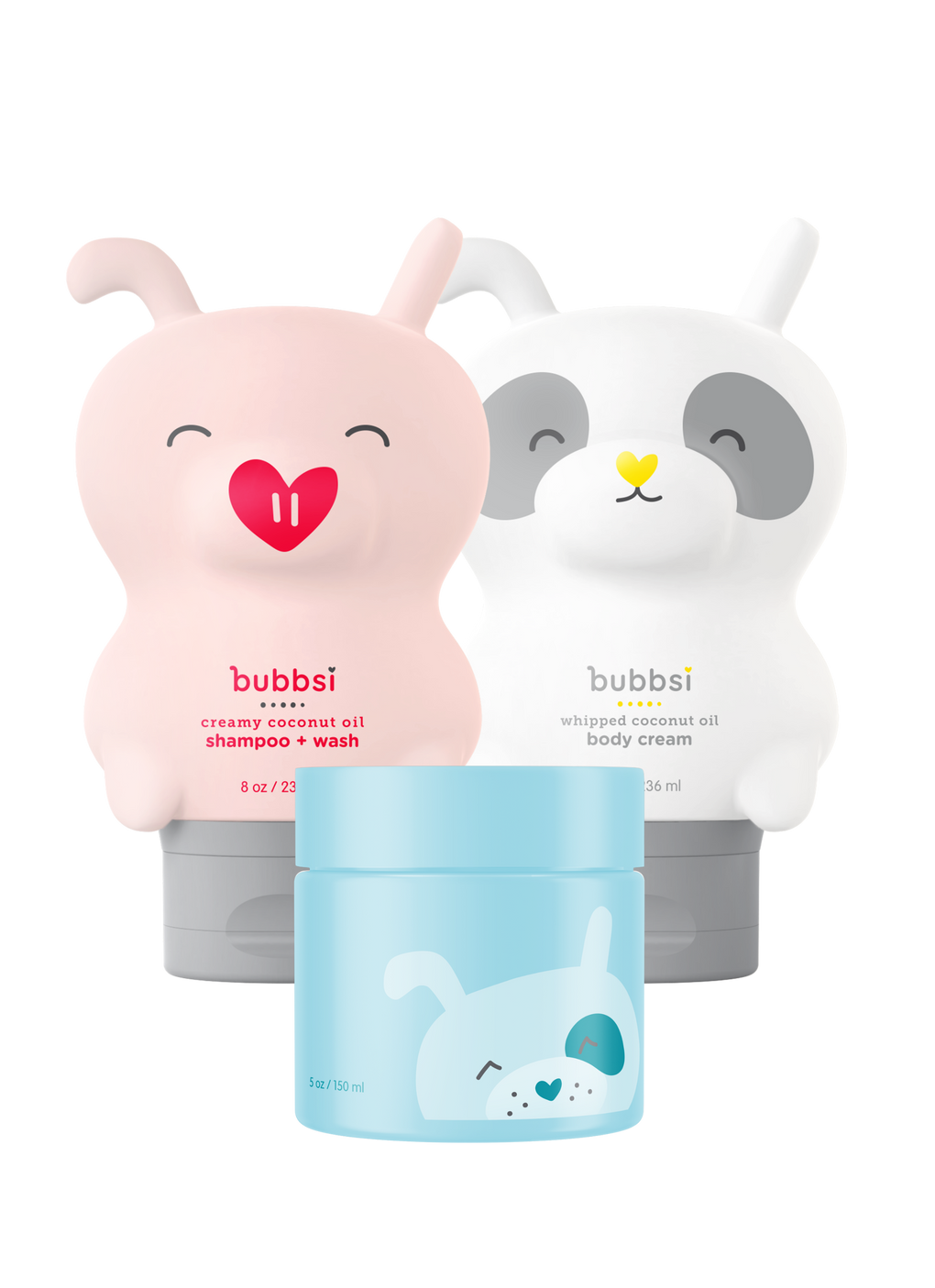With so many sunscreens on the market, in spray and lotion and stick form, it can be tough to figure out which kids’ sunscreen to trust. Should you look for terms like UVA, UVB, SPF, broadband, reef-safe, organic, chemical, mineral? What does it all MEAN? We know you just want to choose the best and safest kids’ sunscreen: This primer will help you figure out what to look for.
We are sad to say that Bubbsi isn’t launching a sunscreen formula anytime soon, as it takes years to develop, perfect and get approved. But one day, we hope to make the absolute BEST and safest kids’ sunscreen. For now, we’re currently stocking up on mineral sunscreen (see our list below). We will walk you through three different factors to consider when choosing the safest sunscreen for your kids: 1) mineral vs chemical, 2) SPF level and 3) broad spectrum vs UVB.
First, a Quick History Lesson
When sunscreens were first sold commercially in the 1940s, their sole purpose was to protect the skin against sunburn during the summer. The FDA began regulating sunscreens in the late 1970s by establishing SPF testing and labeling.
Over time, the public's usage of sunscreen and the FDA’s understanding of skin absorption and active ingredients have vastly changed. Sunscreen isn’t just for summertime sunburn prevention anymore; it's now used year-round to protect the skin from sunburn, premature aging, and skin cancer. Since 1999, the FDA has been treating sunscreens as OTC (over the counter) drugs, and the FDA recently proposed a new rule where they are asking industry professionals to provide more information and testing on sunscreens to be sure they’re safe when used on a daily basis over time.

Chemical vs. Mineral Sunscreens
The main difference between chemical and mineral sunscreens is in their active ingredients. Mineral sunscreens—widely considered the best kids’ sunscreen—contain zinc oxide and titanium dioxide, both of which sit atop the skin and create a physical barrier to reflect light rays. They aim to protect against UV rays without significant absorption into the bloodstream. That’s why they are the safest kids’ sunscreens, and are also recommended for pregnant women.
Chemical sunscreens use actives that penetrate skin cells, absorb UV rays, and dissipate them. Avobenzone, oxybenzone, octocrylene and ecamsule are some common ingredients found in sunscreens and are being reviewed and further researched for their safety.
A study examined four chemical sunscreens containing the ingredients listed above to understand the extent to which these chemicals are actually absorbed into the bloodstream of a daily user. Three of the chemicals were found in the bloodstream at levels higher than the FDA regulation limit after a week of use. A followup study looked at six ingredients instead of four, and showed that all six showed up in the bloodstream after only one application, and that once absorbed, they remain in the body for extended periods of time. The safety of those accumulations has yet to be determined; however, until we understand more, we prefer to stick to mineral sunscreens, the active ingredients of which are the only ones considered GRASE (generally regarded as safe and effective) by the FDA. Furthermore, oxybenzone and octinoxate have been banned in Hawaii and Key West for their harmful effects on reefs, one more reason to avoid. They are also the ones that are proven hormone disruptors. So if you’re in a pinch and need to use chemical sunscreen as your kids’ sunscreen, check the label and avoid ones with oxybenzone and octinoxate.
Some sunscreens are mineral-based but still use chemicals that absorb into the bloodstream. For this reason, when shopping around for the safest sunscreen for kids, look for a label that says “mineral,” and then check the active ingredients: There should be zinc oxide and/or titanium dioxide and nothing else. Oftentimes these purely mineral sunscreens have “baby” on the label.
Sunscreen Lotion v. Spray
Even within mineral sunscreens, mineral particle size matters. "Nano" particles are smaller and more likely to get in the bloodstream, while "non-nano" mineral particles are ideal because they are larger and more likely to stay on top of skin. That is why sunscreens in aerosol spray form are not ideal, as they use mineral particles that are so small that they are often inhaled. If you do use a spray as a touch-up, make sure not to spray it toward your face, as there is an inhalation risk, no matter if it’s mineral or chemical. Note that non-nano mineral sunscreens are also considered the best for the environment and ocean life.
Another problem with sprays? Most people don’t use enough sunscreen for full coverage: Some studies show that it may take more than 250 seconds of spraying on each limb to get enough coverage.
In general, we suggest sticking with a lotion for the maximum amount of even coverage. You can touch up with spray or stick on the go.
SPF Max Levels
The SPF (Sun Protection Factor) number tells you how long the sun would take to affect your skin when using a sunscreen product exactly as directed. For example, SPF 30 means that it would take 30 times longer for UV rays to burn your skin than if your skin was left bare.
Research shows that SPF values between 30 and 50 provide adequate protection for even those most prone to sunburns. The FDA only recognizes a max SPF value of 60, meaning that anything above that doesn't have statistically significant additional benefit. So don't go crazy trying to get the highest level of SPF.
Broad Spectrum vs. UVB
The sun emits two types of UV (ultraviolet) rays that are detrimental to the skin:
- UVB rays cause sunburns and are a factor in the development of skin cancer. A sunscreen’s SPF number is mainly associated with the amount of protection from UVB it provides.
- UVA rays damage skin which leads to tanning, skin aging, and wrinkles. Some UVA rays may contribute to sunburns.
On sunscreen packaging, the words “broad spectrum” means the product contains ingredients that can protect you from UVA as well as UVB rays. While UVB rays are the main cause of a stinging sunburn, skin needs protection from both UVB and UVA rays. Sunscreens specifying “broad spectrum” are the best sunscreens for kids, as they provide the most coverage.
The bottom line? Look for a Broad spectrum, non-nano, fully mineral sunscreen between SPF 30-50.

Our Picks for the Safest Sunscreen for Kids
The Bubbsi team of moms currently loves two sunscreens that fit the safety checklist: Top pick: Think Baby's SPF 50 mineral lotion. It's clean, goes on nice and smooth, not sticky or clumpy and smells delicious. For on-the-go, we love Baby Bum's SPF 50 Roll-on for the same reasons!
We also love to use UPF hats and clothes to cover up when possible—especially when swimming.
What if sunscreen irritates my child's skin?
Sunscreens can often be harsh on a little one's delicate skin. We recommend moisturizing skin with Bubbsi's Body Cream and Oil Balm before adding mineral sunscreen on top. The moisturizers replenish skin's moisture and add a layer protection, while mineral sunscreen protects against harmful UV rays.
Note: Bubbsi may earn commission on the products recommended above, but we only recommend items we love.




